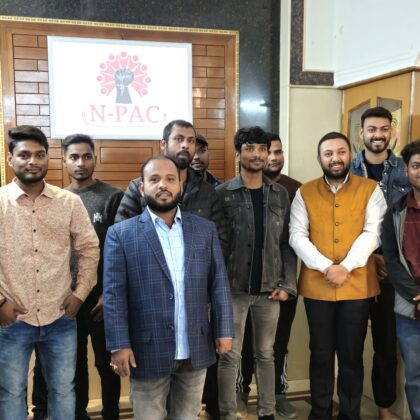
Social media has transformed the landscape of political campaigns, providing candidates with unprecedented opportunities to connect with voters, shape public perception, and drive campaign strategies. Its influence extends far beyond mere communication; it has become a crucial tool for engagement, mobilization, and messaging. Here’s how social media has become a game-changer in political campaigns:


1. Enhanced Direct Communication
Real-Time Interaction: Social media platforms allow candidates to interact with voters in real-time. This direct communication helps candidates address concerns, answer questions, and respond to current events promptly.
Personalized Messaging: Social media enables tailored messaging to specific demographics and interest groups. By analyzing user data, campaigns can craft messages that resonate with particular voter segments, increasing engagement and relevance.
2. Expanded Reach and Visibility
Broad Audience Access: Platforms like Facebook, Twitter, Instagram, and TikTok offer access to a vast audience, including younger voters who may not engage through traditional media. This expanded reach helps campaigns tap into diverse voter bases.
Viral Potential: Social media has the potential for content to go viral, amplifying messages beyond the campaign’s immediate reach. Viral posts can generate significant attention and support, often at minimal cost.
3. Cost-Effective Advertising
Targeted Ads: Social media advertising allows for highly targeted ads based on user demographics, interests, and behaviors. This precision targeting maximizes the effectiveness of ad spending and reduces wasted resources.
Lower Costs: Compared to traditional media such as television and print, social media advertising is often more affordable. This cost-effectiveness makes it accessible for campaigns with varying budgets.
4. Real-Time Feedback and Analytics
Immediate Insights: Social media provides real-time feedback on campaign messages and strategies. Candidates can gauge public reaction, monitor sentiment, and adjust their approaches based on immediate responses.
Data-Driven Decisions: Analytics tools on social media platforms offer valuable insights into user engagement, campaign performance, and audience demographics. This data helps campaigns make informed decisions and optimize their strategies.
5. Grassroots Mobilization
Organizing Events: Social media is a powerful tool for organizing and promoting campaign events, rallies, and fundraisers. It facilitates the mobilization of grassroots supporters and encourages community involvement.
Voter Outreach: Campaigns can use social media to encourage voter registration, provide information on voting procedures, and drive turnout. Engaging with voters directly helps boost participation and engagement.
6. Shaping Public Perception
Image Building: Social media allows candidates to control and shape their public image by sharing personal stories, achievements, and policy positions. This helps build a positive narrative and connect with voters on a personal level.
Combatting Misinformation: While social media can spread misinformation, it also provides a platform for candidates to correct false narratives and provide accurate information. Active monitoring and response strategies are essential for managing misinformation.
7. Engaging with Diverse Audiences
Reaching Niche Groups: Social media platforms cater to various interest groups and communities. Candidates can engage with niche audiences and address specific issues relevant to them, fostering a deeper connection with diverse voter segments.
Interactive Content: Platforms support interactive content such as polls, Q&A sessions, and live streams. These interactive features enhance engagement and allow candidates to directly address voter concerns and interests.
8. Crisis Management
Rapid Response: Social media enables campaigns to respond quickly to crises or controversies. A well-coordinated response can mitigate damage and shape the narrative in a time of crisis.
Transparent Communication: Transparency is crucial during challenging times. Social media provides a direct channel for candidates to communicate openly with the public and address issues promptly.
Conclusion
Social media has fundamentally changed the dynamics of political campaigns, offering tools for enhanced communication, targeted advertising, and real-time engagement. By leveraging these platforms effectively, candidates can reach a broader audience, shape public perception, and drive their campaign strategies. However, the power of social media also requires careful management and strategic use to navigate its complexities and potential pitfalls. As social media continues to evolve, its role in political campaigns will likely grow, further shaping the future of political engagement and strategy.









